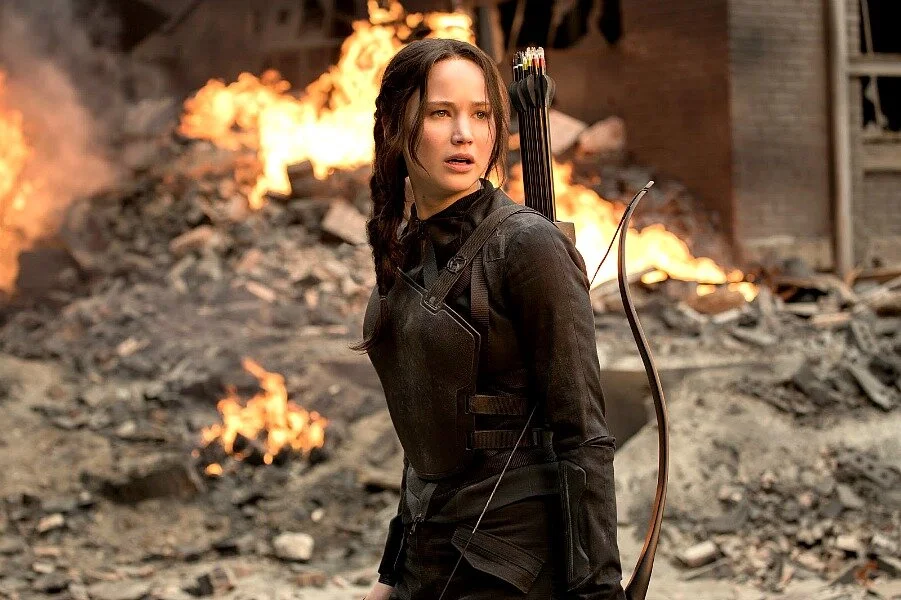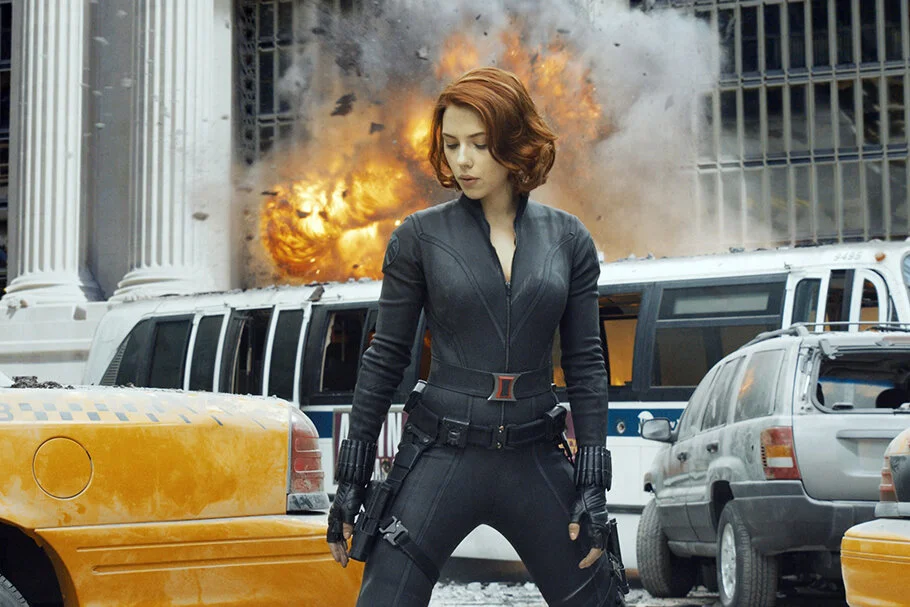“Strong Female Characters” aren't Actually That Progressive
Tauriel from The Hobbit (Peter Jackson)
There is nothing I love watching more than a woman kicking ass. In today’s films, however, this seems to be an entirely literal concept. While it is undeniably satisfying and empowering to watch such impressive fight scenes featuring Black Widow, Katniss, Rey, and other similar female characters, it is hard to ignore that these films equate strength entirely with the ability to fight — a very traditionally male standard. This ultimately provides an extremely reductive view of what makes a person admirable — which is limiting for all genders — and also suggests that the values of our society are still largely male-centric.
In many popular films today, the “strong female characters” are so one-dimensional that they are barely even characters. Tauriel from The Hobbit trilogy is one such example, and so is Maria Hill from The Avengers. The only characteristics that I remember about these women is how well they can wield a weapon. Furthermore, it is worth noting that Tauriel’s addition is almost entirely to act as a love interest for Legolas and Kili. This reinforces a very old and pervasive trend of female characters existing solely for the purpose of allowing male characters to demonstrate their masculinity.
Katniss Everdeen from Mockingjay Part 1 (Lawrence, 2014)
Black Widow and Scarlet Witch — the only women in the Avengers crew — are slightly more fleshed out, but still lacking the depth, backstory, and attention provided to Thor, Iron Man, Hulk, and Captain America — all of whom have had their own film series. Katniss and Rey — rare female leads in live-action films — are both more multi-dimensional, but are still principally defined by their grit, guts, and fighting ability.
The emergence of female characters who demonstrate these traits is not a bad thing. It is definitely a sign of progress that many people, children especially, are growing used to the idea of an independent woman being able to take care of herself. Certainly, it is a huge improvement from the damsel-in-distress image of women that I was used to seeing on TV as a kid. The issue, however, is that these tough, fighting-focused traits are the only ones that are being featured.
THE AVENGERS, Scarlett Johansson, 2012. ©Walt Disney Studios Motion Pictures/Courtesy Everett Collection
While there are many highly developed, nuanced characters of all genders in books and films, the superhero-style fighters are typically the most popular and most publicized figures in the media. There is a simple reason for this: action films are often the highest grossing films. In fact, over the past 365 days, the top four highest grossing movies have been: Star Wars: The Force Awakens, Jurassic World, Captain America: Civil War, and Deadpool. Therefore, naturally, it makes sense that all the popular characters would be skilled fighters, above all else. As my brother said, “regardless of whether it’s a man or a woman, fight scenes are exciting.”
This is true; obviously, not all the fans of those above-mentioned films are male. I personally enjoy a good action film very much. But, we have to keep in mind that books and movies are human constructions, and they always have been. What is exciting, valuable, or entertaining in a text is largely influenced by how its authors present it, as well as by the social context in which it is viewed. This means that if the creators of a work of fiction are at all influenced by societal values, then the works they create will be inherently biased.
As Virginia Woolf points out in A Room Of One’s Own:
“Since a novel has this correspondence to real life, its values are to some extent those of real life. But it is obvious that the values of women differ very often from the values which have been made by the other sex; naturally this is so.
Yet is it the masculine values that prevail.
Speaking crudely, football and sport are “important”; the worship of fashion, the buying of clothes “trivial.” And these values are inevitably transferred from life to fiction.
This is an important book, the critic assumes, because it deals with war. This is an insignificant book because it deals with the feelings of women in a drawing-room. A scene in a battlefield is more important than a scene in a shop — everywhere and much more subtly the difference of values persists.”
One might argue that this is so because scenes in a battlefield are indeed more consequential than scenes in a home or a shop. However, that isn’t entirely true. Family, relationships, emotions, and parenthood — these are all crucial parts of our everyday lives and very much worth exploring. This is not to say that any one topic is more important than another, but merely that they are all equally so and should be recognized as such.
Cinderella from Cinderella (Branagh, 2015)
Because of these differences in values, however, traits that have been traditionally associated with men — intelligence, courage, strength, resilience — have always been presented attractively in the media that we consume. Traits that have traditionally been associated with women — kindness, compassion, sensitivity, patience — have been largely underrepresented. When these “womanly” traits are featured, they often come off as weak and unworthy of attention, despite actually being equally valuable characteristics. For example, in Disney’s Cinderella, Cinderella’s inner strength — her unwavering kindness, her resilience, her quiet courage — is never appreciated the way a hero’s fighting ability is.
What we are seeing now with these films is an attempt to elevate female characters to the same status as male ones, by granting them the same traits that made male heroes so admirable. The nature of this characterization suggests that a very prominent hierarchy still exists: physical strength is valued because it is manly, and being manly is better than being womanly.
The problems with this are plenty. Most notably, while it is now acceptable for women to be smart, strong, and kind, it is still not widely accepted for men to be teary, family-oriented, or timid. There are so few popular examples of sensitive, emotional male characters who openly cry or stay home with the kids. For instance, while Albus Dumbledore cries several times in the Harry Potter books — really meaningful scenes that make this powerful character more human — this is never shown in any of the film adaptations. It is as though women are allowed to act like men, because that is a step forward, but men are not allowed to act like women, because that would be regressing.
This photo provided by Disney/Marvel shows, Chris Evans, left, as Captain America/Steve Rogers, and Chris Hemsworth as Thor, in a scene of the new film, “Avengers: Age Of Ultron.” The movie releases in the U.S. on May 1, 2015. (Jay Maidment/Disney/Marvel via AP)
A quick look at male action figures, actors, and advertising will prove how great the pressure is on boys to be muscular, stoic, brave, and strong. These action films starring one-dimensional power fighters do nothing to alleviate the damaging standards. As a result, men and boys still feel afraid to cry, to show affection, or to look anything less than herculean.
Ideally, everyone could just be portrayed as all-around good and realistic humans — strong, empathetic, intelligent, tear-shedding humans. There are definitely glimpses of this already. Finn from The Force Awakens is a very caring person, and a much less reckless, natural-born fighter than most male leads. Peeta from The Hunger Games was also a good example of a more sensitive male character. In TV shows, where there is more time to develop characters and place them in various settings, we can see more nuanced portrayals of both sexes. Particularly, Avatar: The Last Airbender and The Legend of Korra do a great job of portraying admirable characters with many diverse qualities, regardless of gender — skill in combat, intelligence, sense of humour, and an unquestioned willingness to embrace and display genuine emotions.
Zuko & Iroh from Avatar
It can be easy to look at all the strong female fighters on TV today and think that we have achieved equality. Again, we have certainly seen much progress over the past few years. However, it is important to recognize that fighting ability alone does not equate strength or depth of character. The construction of action heroes — and by extension, of laudable characters in popular culture — is still inherently based on traditionally male values. A gender hierarchy is still in place, and as long as that exists, no one will benefit.






